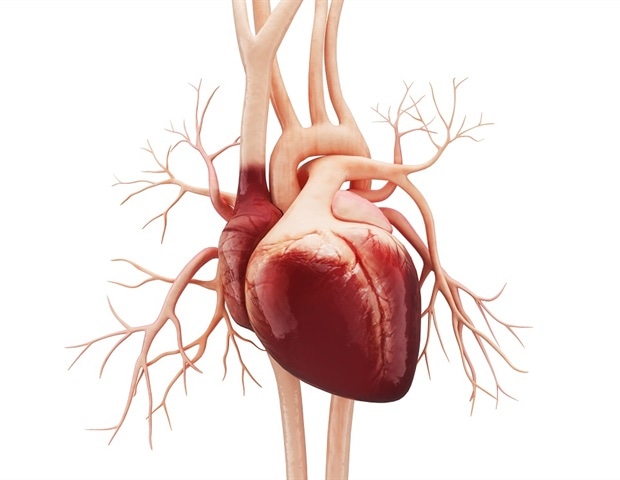
New analysis explains how low ranges of the electrolyte sodium within the blood can disrupt the timing of the heartbeat in sufferers taking extensively used rhythm-control drugs similar to flecainide, which is usually prescribed for atrial fibrillation and different quick or irregular coronary heart rhythms.
The research, by Virginia Tech researchers on the Fralin Biomedical Analysis Institute within the journal Coronary heart Rhythm, was carried out utilizing guinea pig hearts and confirmed that blocking cardiac sodium channels with generally prescribed medication similar to flecainide could make the guts’s electrical conduction unusually delicate to even modest reductions in blood sodium ranges.
Though sodium is commonly related to dietary salt, when measured in medical settings it refers back to the focus of sodium ions within the blood – an element for nerve and muscle perform. When these ranges drop under a important degree, a situation often called hyponatremia, electrical signaling within the coronary heart can grow to be unstable, particularly in sufferers on sodium channel blockers.
Medical doctors have lengthy identified that sodium channel blockers can gradual cardiac conduction, and that low sodium ranges are dangerous. However what wasn’t clear is why the mixture of the 2 is so problematic. This research helps clarify the mechanism.”
Steven Poelzing, research’s senior creator and the James and Deborah Petrine Professor with the Fralin Biomedical Analysis Institute at VTC
The researchers discovered that when sodium channels are impaired, the guts depends extra closely on backup pathways to maintain electrical alerts shifting. A kind of pathways includes electrical interactions between neighboring coronary heart cells in very slim areas – a course of often called ephaptic coupling.
One other pathway includes the move of potassium ions by channels that helps reset the guts’s electrical state. When sodium ranges fall, these mechanisms do not compensate as they usually would, inflicting conduction to gradual greater than anticipated.
“In case you have the correct amount of sodium in your blood, electrical exercise will nonetheless transfer by the guts on the proper pace – even when sodium channels are blocked,” Poelzing stated. “However if you happen to drop too low – due to vomiting, diarrhea, sure drugs, or a medical situation – the drug could all of the sudden grow to be detrimental.”
Importantly, the research exhibits that interfering with both ephaptic coupling or the web outward move of potassium ions reduces the guts’s sensitivity to low sodium when sodium channels are blocked. That perception opens the door to extra focused methods for managing conduction dangers in sufferers who depend on sodium channel blockers.
“This does not imply each affected person wants to fret however it’s immediately related to the medical administration of arrhythmias,” stated Poelzing, who’s with the Fralin Biomedical Analysis Institute’s Middle for Vascular and Coronary heart Analysis. “For some sufferers on medication like flecainide, cautious monitoring of sodium ranges could also be simply as necessary as managing the arrhythmia itself.”
The findings additionally underscore the necessity for physicians to concentrate on hidden interactions between drug remedy and electrolyte imbalances – significantly low sodium ranges – particularly in older adults or hospitalized sufferers, who could also be extra liable to hyponatremia.
“The research signifies that imply sodium ranges should not be an afterthought – particularly for these on coronary heart rhythm drugs,” Poelzing stated. “A fast dialog together with your physician would possibly assist forestall a extra major problem down the road.”
Poelzing can be a professor of Biomedical Engineering and Mechanics within the Virginia Tech School of Engineering.
The research was led by Poelzing and William Adams, who was a scholar within the Translational Biology, Medication, and Well being graduate program working in Poelzing’s lab when the analysis came about. Analysis Assistant Professor Hoeker was among the many co-authors. The analysis was supported by the Nationwide Coronary heart, Lung, and Blood Institute of the Nationwide Institutes of Well being.
Supply:
Journal reference:
Adams, W. P., et al. (2025). Flecainide sensitizes conduction to hyponatremia by an ephaptic mechanism. Coronary heart Rhythm. doi.org/10.1016/j.hrthm.2025.04.048.

